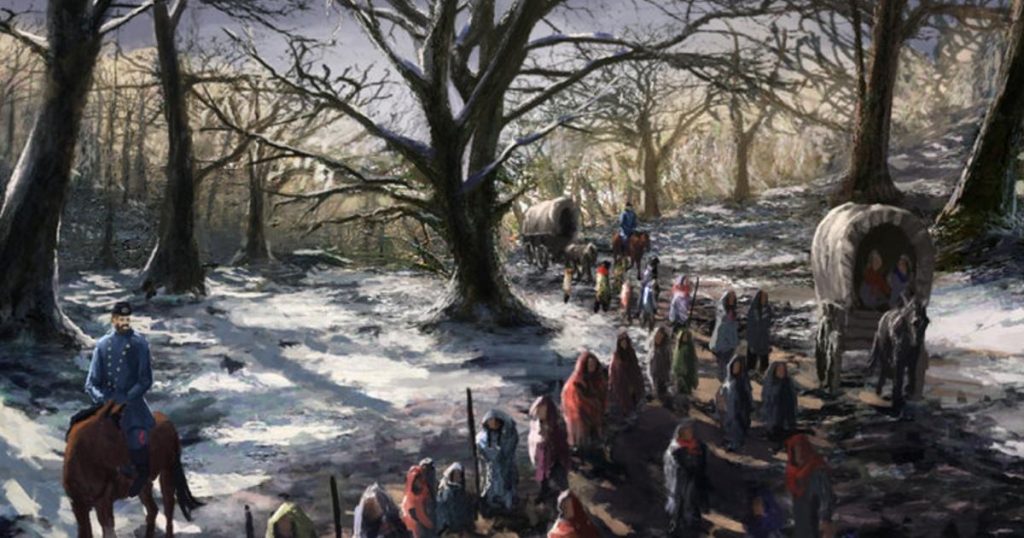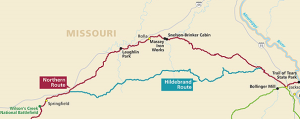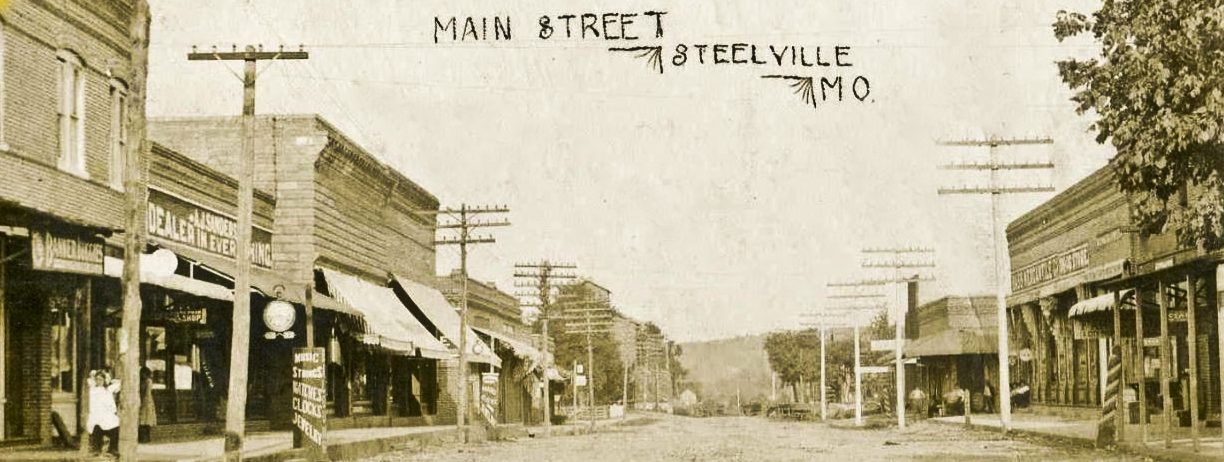
The Cherokee Indian Nation’s forced relocation in 1838 via the “Trail of Tears” is a acknowledged tragedy in U.S. history. The Trail of Tears, which began in Tennessee and set a path through Georgia, Alabama, North Carolina, Illinois, and ended in Oklahoma, was a terrible and sorrowful journey, one that the Cherokee Nation has yet to overcome. During this relocation process, thirty-six detachments of Cherokee Indians were forced to take the trail, and 10 of those detachments were forced to make the passage through Steelville, Missouri.

Trail of Tears Through Missouri
This passing through Steelville has been documented throughout the years in many pieces of literature and in oral testimonies in various Cherokee households for generations. While these stories vary from person to person, the overall commonality is that the trail was harsh even before the Cherokee Nation arrived. Implemented by President Andrew Jackson in 1830, the Indian Removal Act declared that all Native American tribes must leave their lands designated for settlement and relocation within the Indian Territory in present-day Oklahoma. After a decade of unsuccessful movement before the forced route began, roughly four thousand of the Nation’s members embarked in the Trail of Tears on November 17, 1838.
The vast majority of people who embarked on the Trail of Tears came via sea transport from the easternmost parts of the nation to the mainland. For the ten detachments that entered Steelville, the route overland was a terribly trying ordeal. With inadequate food, shelter, and clothing, the Native Americans were already immensely weakened before they even reached the land of Steelville.
Along this route, many perished from exhaustion, starvation, and disease. Despite surviving through this hellish journey, reports reveal that the passing of the Steelville area marked the highest death toll of the Trail of Tears. There are theories that contribute to why this area took such a heavy toll. One such explanation is the local resistance and hostility of the white settlers still living within the Native American lands, who violently contested the relocation of the Cherokee. Regardless of the reasoning, the members of the Nation still faced extreme hardship while passing through the town of Steelville.
The effects of the Trail of Tears were wide-reaching and devastating. Of the 12,388 Cherokees that were relocated, due to the difficult conditions on the Trail, around 4,000 to 6,000 died. The most affected on the Trail were the elderly and the young, a lower percentage of those made it, when compared to the overall group. Those who did reach Oklahoma still had to start building a new life.
